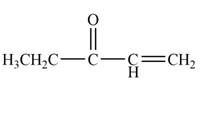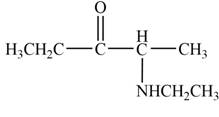
Concept explainers
(a)
Interpretation: The product that is formed by the reaction of
Concept introduction: The bimolecular elimination reaction that favours the removal of a HX substituent from an
Answer to Problem 23.13P
The product that is formed by the reaction of

Explanation of Solution
The product that is formed by the reaction of

Figure 1
In this reaction, the given
The product that is formed by the reaction of
(b)
Interpretation: The product that is formed by the reaction of
Concept introduction: The substitution reaction involves the replacement of one
The nucleophilic reaction that consists of bimolecular as well as bond-making and bond-breaking steps is termed as
Answer to Problem 23.13P
The product that is formed by the reaction of

Explanation of Solution
The product that is formed by the reaction of

Figure 2
In this reaction, the given ketone,
The product that is formed by the reaction of
(c)
Interpretation: The product that is formed by the reaction of
Concept introduction: The substitution reaction involves the replacement of one functional group by other functional group. In nucleophilic substitution an electron rich species attack the species that is deficient in electrons. The electrophile and the leaving group together form a substrate. The nucleophile attacks over the substrate and there occurs the removal of leaving group from the substrate.
The nucleophilic reaction that consists of bimolecular as well as bond-making and bond-breaking steps is termed as
Answer to Problem 23.13P
The product that is formed by the reaction of

Explanation of Solution
The product that is formed by the reaction of

Figure 3
In this reaction, the given ketone,
The product that is formed by the reaction of
Want to see more full solutions like this?
Chapter 23 Solutions
Package: Loose Leaf for Organic Chemistry with Biological Topics with Connect Access Card
- When the conjugate acid of aniline, C6H5NH3+, reacts with the acetate ion, the following reaction takes place: C6H5NH3+(aq)+CH3COO(aq)C6H5NH2(aq)+CH3COOH(aq) If Kafor C6H5NH3+ is 1.35105 and Kafor CH3COOH is 1.86105 , what is K for the reaction?arrow_forwardDraw the product and indicate the stereochemistry when the given alcohol is treated with each reagent: (a) HBr; (b) PBr3; (c) HCI; (d) SOCI, and pyridine.arrow_forwardWhat is the major organic product of the following reaction? (a) (b) NaBH4 CH3CH₂OH ? (c) (d) OHarrow_forward
- 4 But-2-enal, CH₂CH=CHCHO, is a pale yellow, flammable liquid with an irritating odour. (a) But-2-enal exists as two stereoisomers. Draw skeletal formulae to show the structure of the two stereoisomers of but-2-enal. (b) (i) Describe a simple chemical test that would show that but-2-enal is an aldehyde. (ii) Explain why this test gives a different result with aldehydes than it does with keton (c) But-2-enal also reacts with sodium borohydride, NaBH4. (i) Identify the organic compound formed in this reaction. (ii) State the type of chemical reaction occurring. (d) Precautions must be taken to prevent but-2-enal catching fire. Construct a balanced equation for the complete combustion of but-2-enal, C₂HO.arrow_forwardDraw all the alkyl halides with molecular formula C 5H 11Cl formed when pentane (CH 3CH 2CH 2CH 2CH 3) is heated with Cl 2.arrow_forward(a) Give the IUPAC name for A and B. (b) Draw the product formed when A or B is treated with each reagent: [1] NaBH4, CH3OH; [2] CH3MgBr, then H2O; [3] Ph3P = CHOCH3; [4] CH3CH2CH2NH2, mild acid; [5] HOCH2CH2CH2OH, H+.arrow_forward
- Draw the structure of an alkane with molecular formula C7H16 that contains (a) one 4° carbon; (b) only 1° and 2° carbons; (c) 1°, 2°, and 3° hydrogens.arrow_forwardComparing Two Different Methods of Hydration of an Alkene Draw the product formed when CH3CH2CH2CH2CH=CH2 is treated with either (a) H2O, H2SO4; or (b) BH3 followed by H2O2, HO−.arrow_forwardcompound H CH, — N — С — СН — СН, || amide - CH, — CH, — с — СH, - - CH3 – CH = CH - CHarrow_forward
- Draw the structures of (a) 6-methyl-3-heptanol and (b) trans-2-methylcyclohexanolarrow_forward6) Complete the following reactions by giving the starting material, reagent or product. If there is no reaction, then write so. a) 2-bromobutane b) c) d) OH OH NaNH, ? Br NaOH HCI ? OCH 3arrow_forward1.Name and draw the products of each reaction. (a) 3-methyl oct-2-ene + hydrochloric acid (b) 2-fluoro-2-phenyl butanoic acid + ethanol → 1arrow_forward
 Chemistry: Principles and ReactionsChemistryISBN:9781305079373Author:William L. Masterton, Cecile N. HurleyPublisher:Cengage Learning
Chemistry: Principles and ReactionsChemistryISBN:9781305079373Author:William L. Masterton, Cecile N. HurleyPublisher:Cengage Learning
